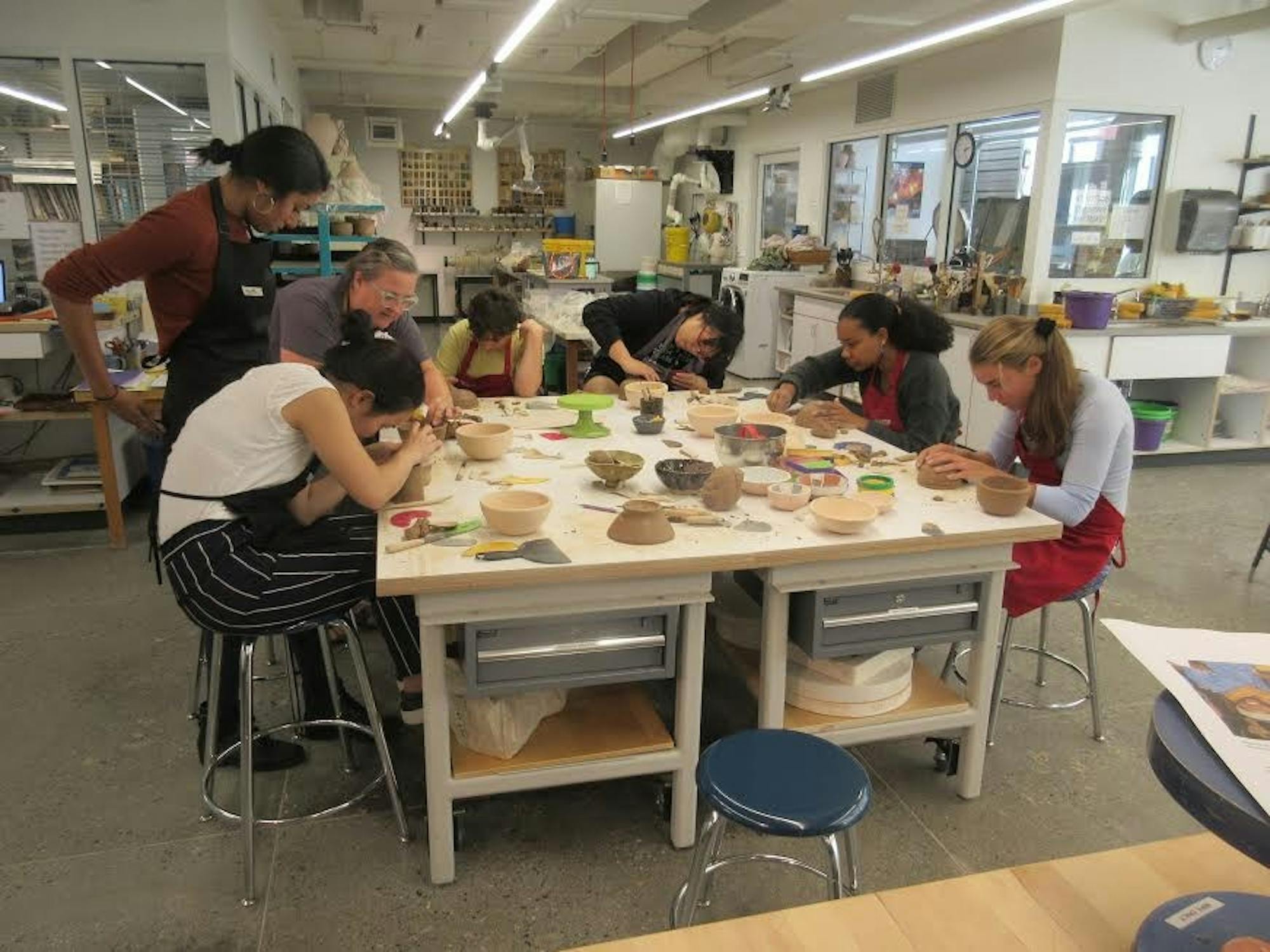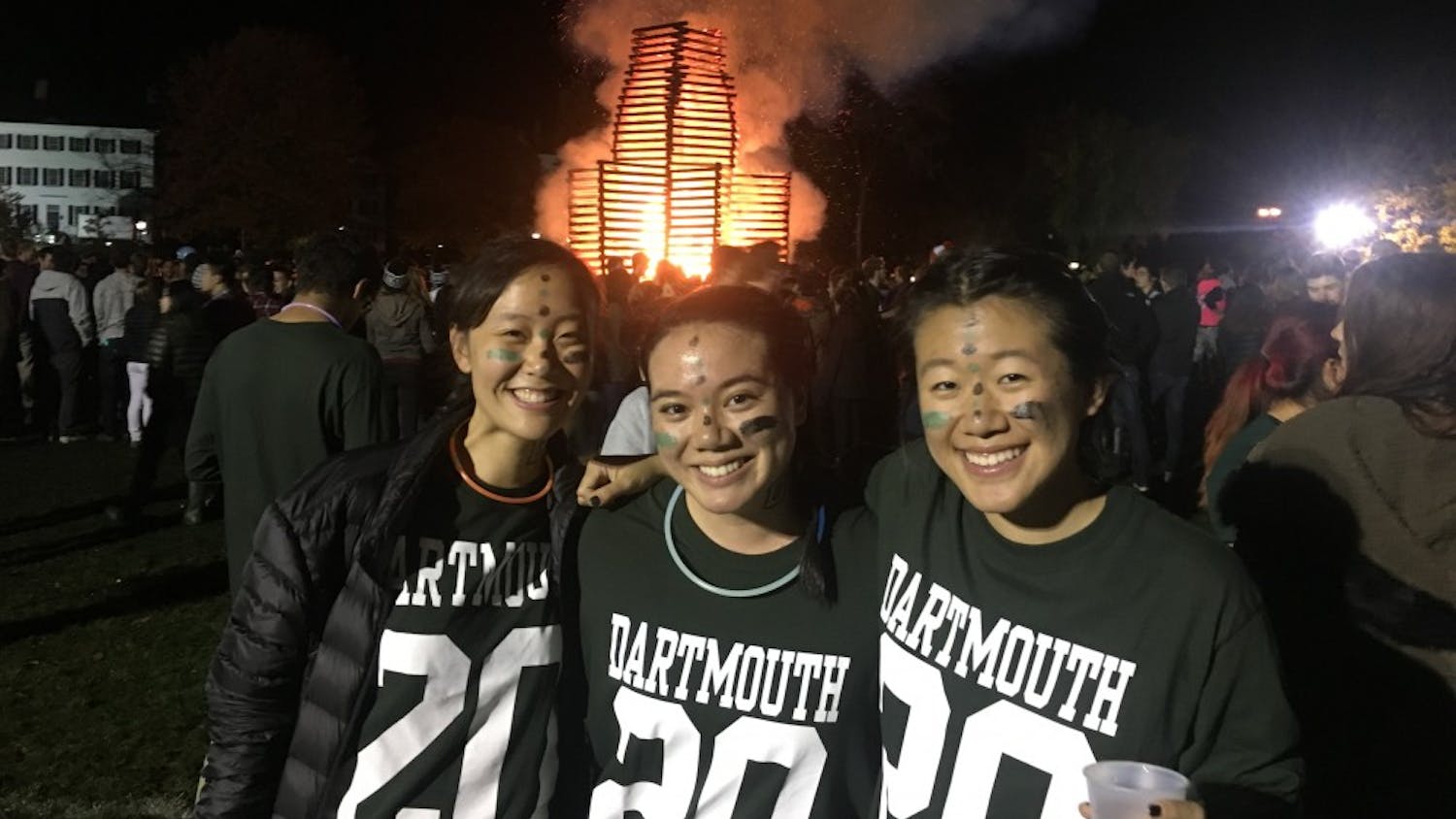The ceramics studio provides access to materials, a team of professionals to guide students just starting out, and a space for students looking to get involved with arts on campus. Sunlight streams in from wide windows on the far wall of the studio, falling on shelves lined with student-made ceramic vessels. The studio creates an atmosphere for students of any level to take a break from their work and de-stress by making something with their hands.
The ceramics studio is one of the three student workshops on campus dedicated to arts engagement. Located in the basement of the Hopkins Center, these workshops include the ceramics studio, jewelry studio and woodworking workshop.
To get involved, students can sign up on the spot and start working that day.
According to Jennifer Swanson, the director of the ceramics program, new students come into the studio almost every day. She said the workshop attracts a variety of students who seem to be interested in the general field of ceramics. At $12 a term, the risks to trying out the studio are low, and many students take advantage of this campus resource.
New students start by learning how to make a simple pinch pot before moving to the wheel. This way, Swanson explained, students can familiarize themselves with clay as a material before moving on to something more complex. Many students will go on to make vases and bowls on the wheel, but even creating something simple can be rewarding for those looking for a creative outlet for stress.
“It’s sort of very relaxing, and a lot of kids are trying to destress,” Swanson said. “You could sort of chat with your friend and pinch a vessel without, like, paying too much attention.”
For many students who frequent the studio, that’s what ceramics provide — a way to take a break from busy schedules and learn a new skill in a low-stress environment. Victoria Quint ’22, one of the studio’s four student assistants, describes the studio as a place she uses to escape her academic stress.
“It’s a chance to just sit down and do something with your hands,” Quint said. “It’s rewarding in a very different way than, you know, turning in an essay.”
For Betty Kim ’20, another student assistant, doing ceramics has taught her skills that have helped her in other parts of her life at Dartmouth. She remembers feeling frustrated when her first pot didn’t turn out the way she’d hoped. Yet this frustration made the process feel rewarding, and she kept trying to improve. Kim said that ceramics has helped her handle difficult tasks outside of the studio.
“I wanted to challenge myself to like not get down on myself,” Kim said. “The ceramics studio is a place where I learned how to mess up and like not be mad at myself about it.”
The students who frequent the studio come from a variety of artistic backgrounds. Quint said she learned how to make pottery in high school, and when she saw Dartmouth’s ceramics studio on her tour, she knew she wanted to get involved. She visited the studio regularly her freshman year and was hired as a studio assistant in the fall of 2019.
Kim didn’t discover ceramics until well into her junior year, when she was living in Hanover during an off-term and decided to attend one of the studio’s free introductory events. Looking to challenge herself, she took a hand-building class that winter and, by the end of the term, she was ready to teach students herself. One of the things that kept bringing her back was the community she found at the studio.
“The people who work at the studio are like just really, really great people who will help you improve and, you know, just support you in whatever you want,” Kim said.
Students can pursue a variety of ceramics projects at the studio. While most are interested in producing functional objects — like bowls, vases and mugs — there are other options for those interested in making sculptural objects, for example. Swanson mentioned that she has seen students make ceramic animals, including an elephant and an octopus. She described one student who made a set of commemorative coasters with different instruments for her wind ensemble.
“We just try to give people basic instruction,” Swanson said. “But you know, we try to work with what their interests might be.”
Everything at the studio is handmade, including the glazes that go on students’ work before it enters the kiln.
Swanson came to Dartmouth in 2001 and has served as the studio’s director since 2004. When she started, the studio was located across the border in Vermont — ceramics joined the other student workshops in the Hop in 2016. Since moving to campus, Swanson said that she has seen a large increase in the number of students who frequent the studio. She said she believes that the studio’s more central location has made it more visible to students, encouraging them to get involved. Student work is displayed on shelving in the hallway for students and Hanover community members to admire.
The studio is open to undergraduates most afternoons and graduate students on Tuesdays and Thursdays. Classes are offered for all students of any level at an additional charge — currently, students can take an Introduction to Hand Building and Decorative Techniques, Introduction to the Potter’s Wheel or attend walk-in Potter’s Wheel Refresher sessions on Friday afternoons.
Both Kim and Swanson said that — as is the case with the jewelry studio — many students come for the first time their senior year. They hope that first and second-year students will check out the studio early on, and that it will become a place they can go when they need a break.
“I think everyone should have some kind of place on campus where they’re doing something just for the act of doing it,” Kim said. “[The studio is] probably going to be the place I miss the most at Dartmouth.”
Betty Kim is a former member of The Dartmouth senior staff.




